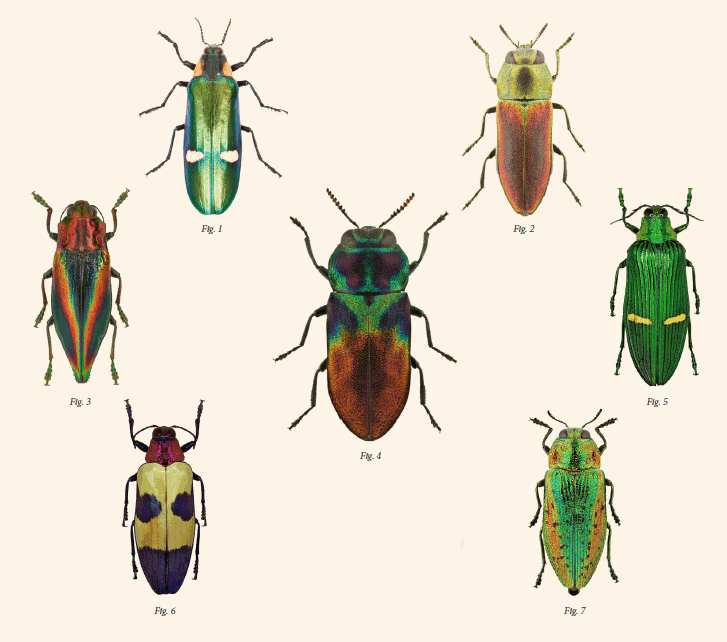Bedazzling Beetles
Jewel Beetles
The animal world flashes bright colors for mating or warning. However, a colorful appearance can also equal an easy meal for a predator. But the jewel beetle is a creature of a different color. This beetle’s colors serve as camouflage against the dense backdrop of trees and plants. How is this possible?
Though many colors consist of only one pigment, the jewel beetle has an iridescent, not pigmented, color. When light hits the beetle’s exoskeleton (the armor covering its body), it passes through thin layers that refract the light, changing the colors through interference and creating a rainbow-like spectrum of colors. Specific colors like amethyst purple, sapphire blue, and emerald green are determined by the spacing between the layers. This colorful iridescence helps the beetle blend in with its environment, disrupting a predator’s ability to spot it.
Because our Creator knew that the brightly colored jewel beetle could easily be attacked, he displayed his creativity by giving it this sparkling subterfuge.

Fig. 1—Megaloxantha bicolorassamensis; Fig. 2—Anthaxia cichorii; Fig. 3—Cyphogastra javanica; Fig. 4—Anthaxia dimidiata; Fig. 5—Catoxantha opulenta; Fig. 6—Chrysochroa buqueti; Fig. 7—Lamprodila rutilans
Answers Magazine
January–March 2022
God created the world to be inhabited, right down to the frozen continent at the bottom of the globe.
Browse IssueRecommended Resources

Answers in Genesis is an apologetics ministry, dedicated to helping Christians defend their faith and proclaim the good news of Jesus Christ.
- Customer Service 800.778.3390
- Available Monday–Friday | 9 AM–5 PM ET
- © 2025 Answers in Genesis





